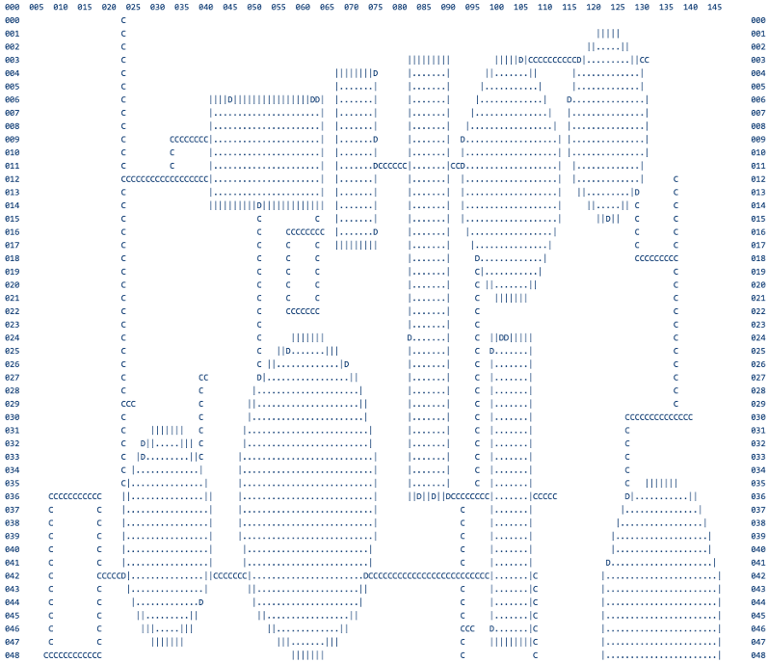How to Generate Circular Rooms
The file CircleData.cs contains data used to draw rings around a point. There are 35 concentric rings with three arrays holding:- The number of points in each ring
- The offset into the points x,y array where the rings starts
- The x,y offsets of the points in each ring relative to the center point
Rooms Are Okay, But…
…not much use without corridors. ("You appear in a room in the dungeon. There are no doors and the oxygen runs out pretty quickly. You are dead.") We not only need corridors, but for all the rooms to connect to each other, which is a slightly harder problem. We want the player to leave a room, wander the corridors, and eventually reach every room in the level. Every room can have up to eight doors, and each is nonexistent (null) or linked to a corridor. Doors are defined as a List<Corridor> and initialized to eight nulls; these are accessed via a room as Doors[3] etc. Every corridor starts from a room and holds a reference to the room. Grid Points occur every six pixels in both dimensions and are held as a flag in the DungeonLocation class. Corridors run along them, but feel free to change the grid point interval, which will affect the character of the corridors. As corridors grow, each is given a segment length of 3-6 locations. If a corridor hits a gridline at the end of the segment, it picks a random direction: left, right or straight ahead.Sets
The key to it all is using Sets, more specifically the generic HashSet<T>Class type. HashSets provide an Add method for adding items to the set, as well as a Contains method to check if the item is in the set. A HashSet is a container, so HashSet<Corridor> provides an easy way to check the attachments between corridors. For rooms, there's a HashSet<DungeonRoom>. This holds a set of all rooms that can currently be reached from a particular room. When two corridors meet, the two start rooms do a HashSet.UnionWith() with each other; so if room 1 and room 2 get connected, and room 1 is already connected to rooms 3, 5 and 7, and room 2 to rooms 4, 6 and 8, rooms 1-8 are now connected. The level is constructed by adding corridors until all rooms are linked together. Note that when a room is created, it adds itself to the linked rooms. That's this odd-looking line in the DungeonRoom Constructor:ConnectedRooms.Add(this);This is a convenience, so when two rooms are linked, there's no need to explicitly add them to each others' ConnectedRooms set.
Program Architecture
There are classes for dungeon rooms, levels, corridors and the dungeon itself, but the bulk of the work is done at the dungeon level and the corridors. Corridors are constructed with a reference to the Map, and the Map holds every corridor location (thanks to the LocationType of Corridor as well as links to the corridor objects). As corridors grow, the program places temporary corridor markers. If a corridor can’t link to another room or corridor, the program considers the attempt a failure and removes it. If it succeeds, the corridor is made final, and the temporary marker replaced with a permanent one.Conclusion
Looking back at my original code, I'm amazed I got it working in the first place. The conversion was thrown together very quickly and is not a shining example of C#. For instance, I use a class Atts for holding some common functions and a little bit of global data; there are also a couple of places where corridor placement could have been optimized better. However, the dungeon generation is still very fast, and could provide a good programming example for anyone exploring what C# can do.Upload Your ResumeEmployers want candidates like you. Upload your resume. Show them you're awesome.



